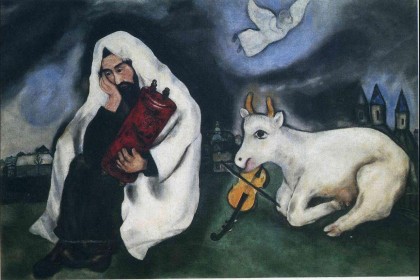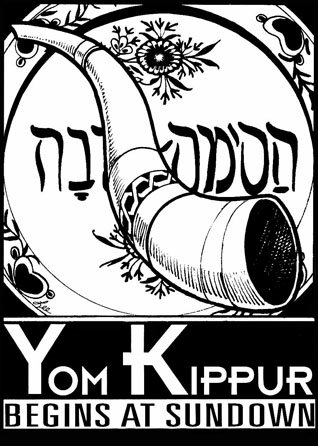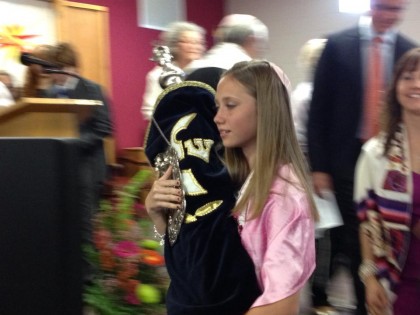Fall Hunter Moon

On erev Rosh Hashanah I went to Beth Evergreen with Kate. The beginning of the Jewish New Year, 5777. Last night I went to the kol nidre service which starts the holiday of Yom Kippur, the end of the 10 days of awe. This morning Kate and I went to the main service for Yom Kippur. It began at 9:30 am and finished at 1:00 pm. Surprisingly, it went so smoothly that I barely noticed the time passing.
 Beth Evergreen’s sanctuary has multiple clear glass windows that offer views of Bergen Mountain and Elk Meadows. The view next to the Torah Ark had a mountain side filled with lodgepole and Ponderosa pine. Almost to the peak of the mountain though there was a small stand of aspen, golden still, in a perfect heart shape. All through the service I had a symbol, an accident of nature, created by my view, my perspective that synched up remarkably well with the overall theme of Yom Kippur, atonement. Also, up and to my right, at the roof of the sanctuary, a square window framed the tip of a Ponderosa pine. It looked like a painting by a member of the Kano school of Japanese art.
Beth Evergreen’s sanctuary has multiple clear glass windows that offer views of Bergen Mountain and Elk Meadows. The view next to the Torah Ark had a mountain side filled with lodgepole and Ponderosa pine. Almost to the peak of the mountain though there was a small stand of aspen, golden still, in a perfect heart shape. All through the service I had a symbol, an accident of nature, created by my view, my perspective that synched up remarkably well with the overall theme of Yom Kippur, atonement. Also, up and to my right, at the roof of the sanctuary, a square window framed the tip of a Ponderosa pine. It looked like a painting by a member of the Kano school of Japanese art.
On this day Jews (and those of like mind) look back over the last year and consider the ways they have fallen short. A prompt to discover how you might have done so are the al chets. For example:
For the mistakes we committed before You through having a hard heart.
For the mistakes we committed before You through things we blurted out with our lips.
For the mistakes we committed before You through denial and false promises.
There are 44 such prompts at this website. A woman who spoke during the service made a very helpful distinction, “Christians,” she said, “are sinners. We sin.” And, Yom Kippur is a day when Jews can acknowledge their sin, atone for it and enter the new year a new creation. This makes abundant sense to me. We are limited creatures, bound to err, even as we strive not to. This does not make us essentially bad (original sin); it makes us human. It is no wonder that Yom Kippur is the most sacred day of the year for Jews.
There was much music. A choir. A jazz band. Last night a cello. Guitars, Rabbi Jamie Arnold and a former member of the congregation. A grand piano. The cantor Tara Saltzman. A lot of congregational singing. A congregational songbook of 30 pages contained songs for the congregation to sing, several of them written by Rabbi Jamie.
This was interspersed with events like members of the congregation lighting candles, taking the Torah in its full dress and carrying it throughout the congregation, short speeches and Torah readings. The Reconstructionist prayer book provided the traditional liturgy, but one filtered through the reconstructionist theology.

Congregation Ohr Tzafon
When the Torah in its red cover and its silver ketel (crowns) on its atzei chayim (the wooden shafts that hold the scroll itself) and a torah shield hanging from the atzei chayim went among the congregation on the shoulders of a congregant, people reached out with their with High Holy Day prayer books, touched it and kissed the book. Others with prayer shawls lifted a corner of the shawl and touched the Torah, kissing the shawl where it had touched the Torah.
At other moments those who had a death in the last week stood and gave the names of the one who died. Remembrance of those who have died and recognition of those in mourning are parts of each service, not just Yom Kippur. This recognizes the tribal nature of the congregants, their intimate relationships with each other through blood. The Yahrzeit, the year anniversary of a death, is also important and recognized during each service.
This was my first experience of the ten days of awe, the period from Rosh Hashanah to Yom Kippur. It reinforced my view of Judaism as a practical, humanistic faith, one that knows the human animal for what we are, not what we pretend to be. Yes, for many it still has a God at the center, but for many it does not. Oddly, it works just as well either way. At least from where I sit.
